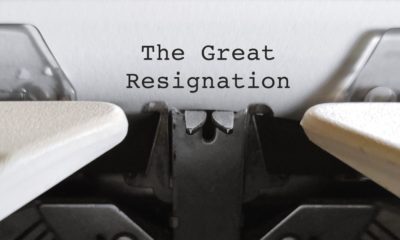Economy
Market Collapse Continues Despite “Monetary Bazooka” From Fed, Rates Cut to Zero

The market collapse continued Monday despite the Fed firing a “monetary bazooka” at the economy during an emergency meeting Sunday night.
The Dow Jones Industrial Average futures were down 5% or almost 1,000 points, triggering the “limit down” level. The S&P 500 and Nasdaq 100 futures also hit their limit down levels, effectively freezing the market overnight.
During the emergency meeting the Federal Reserve cut interest rates to essentially zero, mirroring actions it took during the financial crisis. The official rate is now between 0% and 0.25%, down from 1-1.25%.
Yesterday’s cut comes on the heels of another 0.5% rate cut less than two weeks ago, and is now the lowest its been since 2015.
The Fed also announced a massive $700 billion quantitative easing program that will start today with an initial purchase of $40 billion in Treasurys and mortgage backed securities.
In a statement the Fed says the moves were to shelter the economy from impacts of the coronavirus.
“The coronavirus outbreak has harmed communities and disrupted economic activity in many countries, including the United States,” cut interest rates to essentially zero on Sunday and launched a massive $700 billion quantitative easing program to shelter the economy from the effects of the virus.
Fed chairman Jay Powell said the bank would be “patient” before raising rates again.
“We will maintain the rate at this level until we’re confident that the economy has weathered recent events and is on track to achieve our maximum employment and price stability goals. That’s the test… some things have to happen before we consider… we’re going to be watching, and willing to be patient, certainly.” he added.
President Trump, who has long called for the Fed to lower rates to remain competitive with other countries, quickly released a statement to say he was “very happy” with the move and that people should be “very thrilled.”
However, many are skeptical about the effectiveness of another round of QE, and what will happen next if it doesn’t work, since the Fed now can’t cut rates any lower without going into negative rates.
Peter Boockvar, chief investment officer at Bleakley Advisory Group said: “The Fed blasted its monetary bazooka for sure. This better work because I don’t know what they have left and no amount of money raining from the sky will cure this virus. Only time and medicine will.”
Echoing Boockvar’s statement was Quincy Krosby, chief market strategist at Prudential Financial, who added “The market is at the mercy of the virus and at the mercy of whether the containment policies work.”
The Fed also coordinated with central banks around the globe in an effort to “enhance” dollar liquidity through dollar swap arrangements. Joining the Fed were the Bank of Canada, the Bank of England, the Bank of Japan, the European Central Bank, and the Swiss National Bank.
The banks agreed to lower the rates on the swap lines as well as increase the length of the loans to 90 days.















